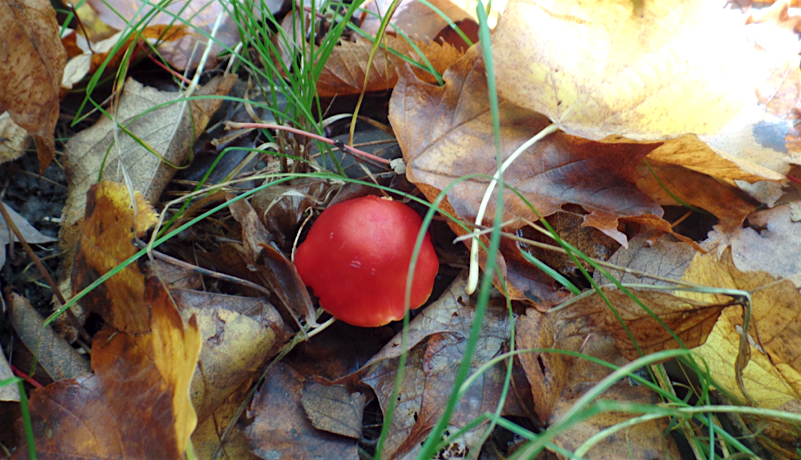Your cart is currently empty!

It happened again, it hits me every year, in the fall. I get a strange magnetic pool, that drags me to the woods, with the basket on my shoulder, and a pocket knife at my belt, to discover the hidden forest gems, the mushrooms. It is a thrill, an adventure, anticipation of what is there next to be discovered. I literally can not contain myself to the house anymore, I love the fresh air, the birds, the leaves, soft forest floor, and my eyes are kin, they are like two radars that are constantly scanning the ground. Aha, here they are. I am overjoyed, happy, talking to little fungi like they are friends.
Chanterelles
First ones to come are usually orange chanterelles, that are called “foxes” in Russian. Sometimes they are large and robust, as big as your hand, other times they are small and delicate yellow foots with real funnels going though their stem. And if you have an eagle eye, you might be fortunate to spot their black sister, the black trumpet chanterelle.
Mushroom composition
What are the mushrooms? They belong to a fungi group, and have chitin in their cells, they exhale carbon dioxide and breeze in oxygen. They also need an external source of food. Fungi are closer in composition to animal world that plants. Mushrooms love to grow at night, and do not have a strong relationship with the sun. They are also full of amino acids and proteins. Which is why they are a great choice if you are avoiding animal products. They are the fruits of a huge underground web of smart organism, mycelium.
Smart creatures
Japanese professor Toshiyuki Nagaki studied fungi organisms and discovered that they can grow super efficient transportation systems just like us, humans. He laid out food on a map of major cities, and put mushroom on Tokyo. The fungi discovered the most efficient and economical routes on the way to their food, that closely resembled the developed train system. Their roots or mycelium is a natural underground internet!
Edible and nutritious
There are a lot of edible kinds of mushrooms. I grew up picking them with my parents, and now take my boys with me into the woods. In fact, they love picking puffballs (they are edible when white inside). So they bring them home and fry them up. I post a lot of mushroom photos and information on my Facebook page and Instagram (search by Yulia Welk) if you want to check them out.
I love edible mushrooms for their practicality, it is like a perfect organically grown food. And I love when I run into a new friend, I identify it, and research if it is edible or medicinal. Some of them can glow in the dark (I found one this year!). And some can break down radioactivity, or plastic! Especially nice is that mushrooms are full of vitamins and minerals. Chanterelles, for example, are great for our livers, and eyes, especially night vision. Plus they are never wormy when old, they have a substance that is anti parasitic (for instance, Lyme’s disease had a parasitic nature). So am making a tincture with them right now to use in the winter time.
Another kind of edible mushrooms is a honey mushroom, that likes old logs and stumps, it acts as nutritive tonic, helps with insomnia, headache and dizziness. In addition, most mushrooms are great natural antibiotics and have anticancer properties.
Funny names
Furthermore I love mushroom names (all edible): black trumpet, witches cap (it is pictured above), chicken of the woods, lobster mushroom, witches butter, shrimp of the woods, slippery jack, honey, coral, lactarius deliciosus, puffball, etc…
Pores, gills, spores, etc…
Sometimes mushrooms have pores under the cap, and sometimes it is gills. They reproduce also by spores that release from under the cap, and are visible on some instances. One time we walked by this one mushroom. And it started to jet a powder cloud of spores into the air from a mere vibration of our shoes on the ground.
NAMA (North American Mycological Association) was in town last week. Therefore, 350 mushroom scientists and amateurs had a great time foraying and discovering more then 500 species of mushrooms in our woods here.
It is important to 100% positively identify the mushrooms. As a result, you are always safe if you use them as food. Good luck mushroom hunting and let me know what you find in your woods.
Mushroom classes
I am going to teach some local WITC classes this fall. It includes the class on medicinal mushrooms on November 2nd from 6 to 9 p.m. at the Cable Community Center, please join us. Call 1-800-243-9482 to register.
Leave a Reply